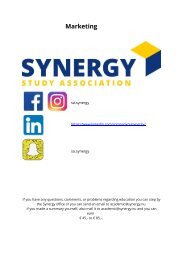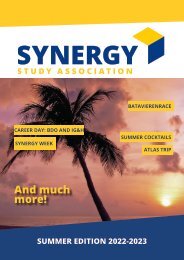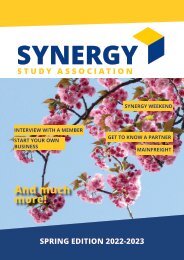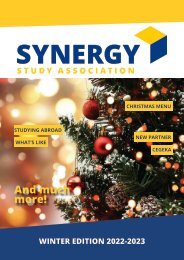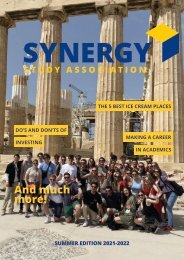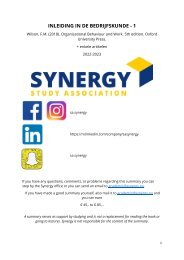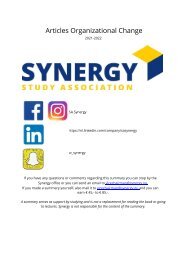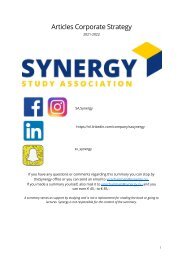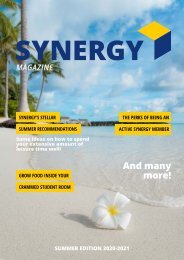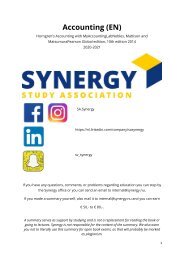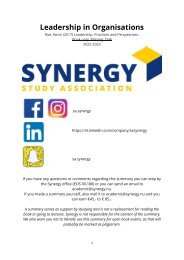Create successful ePaper yourself
Turn your PDF publications into a flip-book with our unique Google optimized e-Paper software.
method or fair value method.<br />
Removal of old building – clearing, grading <strong>and</strong> filling – is a l<strong>and</strong> cost because this activity is<br />
necessary to get the l<strong>and</strong> in condition for its intended purpose.<br />
Generally, l<strong>and</strong> is part of property, plant <strong>and</strong> equipment. However, if the major purpose of<br />
acquiring <strong>and</strong> holding l<strong>and</strong> is speculative, a company more appropriately classifies the l<strong>and</strong> as an<br />
investment. If a real estate concern holds the l<strong>and</strong> for resale, it should classify the l<strong>and</strong> as<br />
inventory.<br />
The cost of buildings should include all expenditures related directly to their acquisition or<br />
construction. These costs include (1) materials, labour, <strong>and</strong> overhead costs incurred during<br />
construction, <strong>and</strong> (2) professional fees <strong>and</strong> building permits. If a company purchases l<strong>and</strong> with an<br />
old building on it, then the cost of demolition less its residual value is a cost of getting the l<strong>and</strong><br />
ready for its intended use <strong>and</strong> related to the l<strong>and</strong> rather than to the new building.<br />
The term equipment in accounting includes delivery equipment, office equipment, machinery,<br />
furniture <strong>and</strong> fixtures, furnishings, factory equipment, <strong>and</strong> similar fixed assets. Costs thus include<br />
all expenditures incurred in acquiring the equipment <strong>and</strong> preparing it for use.<br />
Occasionally, companies construct their own assets. Determining the cost of such machinery <strong>and</strong><br />
other fixed assets can be a problem. Without a purchase price or contract price, the company<br />
must allocate costs <strong>and</strong> expenses to arrive at the cost of the self-constructed asset. Materials <strong>and</strong><br />
direct labour used in construction pose no problem. However, the assignment of indirect costs of<br />
manufacturing creates special problems. Companies can h<strong>and</strong>le overhead in one of two ways:<br />
1. Assign no fixed overhead to the cost of the constructed asset<br />
2. Assign a portion of all overhead to the construction process<br />
The proper accounting for interest costs has been a long-st<strong>and</strong>ing controversy. Three approaches<br />
have been suggested to account for the interest incurred in financing the construction of<br />
property, plant <strong>and</strong> equipment:<br />
1. Capitalize no interest charges during construction<br />
2. Charge construction with all costs of funds employed, whether identifiable or not<br />
3. Capitalize only the actual interest costs incurred during construction<br />
IFRS requires the third approach – capitalizing actual interest. This method follows the concept<br />
that the historical cost of acquiring an asset includes all costs incurred to bring the asset to the<br />
condition <strong>and</strong> location necessary for its intended use. To implement this general approach,<br />
companies consider three items:<br />
1. Qualifying assets → To qualify for interest capitalization, assets must require a substantial<br />
period of time to get them ready for their intended use or sale. Assets that qualify for interest<br />
cost capitalization include assets under construction for a company’s own use <strong>and</strong> assets<br />
intended for sale or lease that are constructed or otherwise produces as discrete projects.<br />
2. Capitalization period → The capitalization period is the period of time during which a company<br />
must capitalize interest. It begins with the presence of three conditions:<br />
1. Expenditures for the asset are being incurred<br />
2. Activities that are necessary to get the asset ready for its intended use or sale are in progress<br />
3. Interest cost is being incurred<br />
Interest capitalization continues as long as these three conditions are present. The capitalization<br />
period ends when the asset is substantially complete <strong>and</strong> ready for its intended use.<br />
3. Amount to capitalize → Avoidable interest is the amount of interest cost during the period that<br />
a company could theoretically avoid if it had not made expenditures for the asset. To apply the<br />
avoidable interest concept, a company determines the potential amount of interest that it may<br />
capitalize during an accounting period by multiplying the appropriate interest rate by the<br />
22



